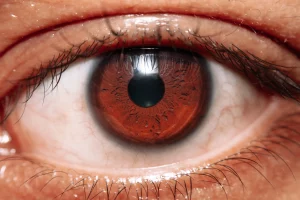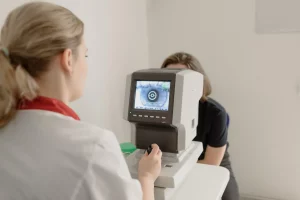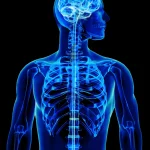Thyroid eye disease is a condition that affects the thyroid gland and the muscles and tissues around the eyes. It can cause the eyes to bulge (exophthalmos) and the eyelids to be inflamed and swollen. The condition can also lead to double vision, pain, and difficulty moving the eyes. Thyroid eye disease is often associated with Graves’ disease, an autoimmune disorder that affects the thyroid gland. Treating this disease may include steroids, surgery, or radiation therapy.
Causes and Symptoms of Thyroid Eye Disease
The exact cause of thyroid eye disease is unknown, but it is thought to be related to an autoimmune disorder. Graves’ disease is the most common form of autoimmune thyroiditis and is believed to play a role in developing the disease. In Graves’ disease, the body’s immune system attacks the thyroid gland, causing it to produce too much thyroid hormone, which can lead to enlarged muscles and tissues around the eyes, as well as other symptoms of thyroid eye disease. Treatment for Graves’ disease often includes steroids, surgery, or radiation therapy.

Other causes of this disease include Hashimoto’s disease, another form of autoimmune thyroiditis, and primary Sjögren’s syndrome, an autoimmune disorder that affects the tear and saliva glands. Treatment for these conditions may include steroids, immunosuppressive drugs, or surgery. In some cases, radiation therapy may also be used.
Thyroid eye disease can also be caused by certain medications, such as interferon-alpha and lithium. Treatment for these conditions typically includes discontinuation of the medication and steroids, immunosuppressive drugs, or surgery. Radiation therapy may also be used in some cases.
The most common symptom of the disease is exophthalmos or bulging of the eyes, which can cause the eyes to protrude from the sockets and lead to difficulty closing the eyelids. Other symptoms include:
-Inflammation of the eyelids (blepharitis)
-Swelling of the eyelids
-Pain in the eyes
-Double vision
-Difficulty moving the eyes
Diagnosing thyroid eye disease
No one test can definitively diagnose this disease. Instead, the diagnosis is typically made based on a combination of medical history, physical examination, and imaging tests.
Medical history: Your doctor will ask about your symptoms and medical history. They may also ask about your family’s medical history, as the disease can run in families.
Physical examination: A physical exam will be conducted to check for signs of the disease, which may include looking at the eyes for bulging or inflammation and narrowing the range of motion of the eyes.
Imaging tests: Imaging tests, such as MRI or CT scans, may be used to get a more detailed view of the structures around the eyes. These tests can help to confirm the diagnosis of the disease and rule out other conditions.
Treatment for thyroid eye disease
Treating this disease may include steroids, surgery, or radiation therapy. The type of treatment will depend on the severity of the condition.
Steroids: Steroids are often used to reduce inflammation and to swell around the eyes. They may be given as pills, injections, or eyedrops. In some cases, high doses of steroids may be necessary to control the symptoms of thyroid eye disease.
Surgery: Surgery may be needed to correct the bulging of the eyes or other problems with eye movement. Surgery is typically only considered when other treatments have failed.
Radiation therapy: Radiation therapy may be used to shrink the muscles and tissues around the eyes. It is typically only considered when other treatments have failed.

Thyroid eye disease can be a severe condition, and early treatment is essential to prevent further complications. If you experience any symptoms of the disease, it is vital to see an ophthalmologist or other medical professional for a diagnosis. Treating it may include steroids, surgery, or radiation therapy. The type of treatment will depend on the severity of the condition.
Preventing Thyroid Eye Disease
There is no one definitive way to prevent the disease. However, some things may help to reduce your risk. These include:
-Getting regular checkups: Checkups can help catch thyroid problems early before they affect the eyes.
-Managing thyroid conditions: If you have a thyroid condition, it is essential to manage it properly, including taking medication as prescribed and seeing your doctor for regular checkups.
-Avoiding certain medications: Some medications, such as interferon-alpha and lithium, can increase the risk of developing thyroid eye disease. If you are taking these medications, talk to your doctor about the risks and benefits.
-Protecting your eyes from the sun: Wearing sunglasses and a hat outdoors can help protect your eyes from the harmful effects of ultraviolet (UV) radiation.



